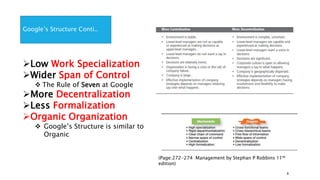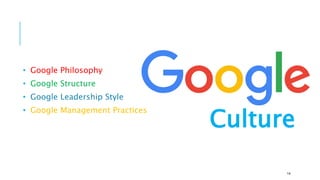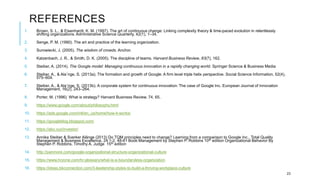Google has a cross-functional matrix organizational structure that is flat and team-oriented. It follows an organic structure with low work specialization, wide spans of control, and decentralization. Google's leadership style is people-centric and focuses on clear feedback, helping employees through questions rather than directives. Leaders are evaluated on behaviors like being even-keeled and making time for employees. Google's culture emphasizes focus on users, innovation, hiring smart and humble employees, and individual freedom balanced with universal rules. It values ambition, cooperation, ethics like "don't be evil", and making decisions based on data.























